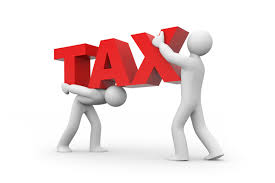Introduction:
Tax can be defined as a financial burden laid on individuals or property owners to support the government. Constitution of India has allocated the power between centre and state to levy different taxes through article 246 and no tax should be levied unless it is accompanied by a law, passed by either parliament or state assemblies. The term tax system refers to collection of taxes.
The gross tax collection by centre in FY2013-14 has been amounted to Rs. 13.64 trillion. Central government levies taxes on custom duties, individual incomes, service tax and central excise. State governments can levy taxes like value added tax (VAT), state excise, stamp duty and profession tax. Local bodies like municipalities can levy tax on octroi, properties and for utilities like drainage, water supply etc.
Different taxes in India are broadly classified into two categories. They are:
- Direct Taxes
- Indirect Taxes
What are Direct Taxes?
The financial burden will directly fall on the tax payer in case of direct taxes. Different taxes which are considered as direct taxes are income tax, wealth tax and corporate tax.
Income Tax:
Income Tax Act 1961, defines that every person whose total income is above the maximum exemption limit is chargeable to the income tax at the rate as prescribed in the Finance Act. This income tax which is an annual tax will be payable on the total income earned in the previous year. Here the person may include an Individual, Body Of Individuals (BOI), Association Of Persons (AOP), Hindu United Family (HUF), Company, Firm and a local authority.
Corporate Sector taxes:
Whether a company’s income is taxable or not will be decided by its domicile. A company based in India (origin) is taxable in India on their entire worldwide income whereas foreign companies are taxed only for their income arising out of Indian operations. Corporate taxes again have different classifications like Minimum Alternate Tax (MAT), Fringe Benefit Tax (FBT), Dividend Distribution Tax (DDT), Banking Cash Transaction Tax (BCTT) and Securities Transaction Tax (STT).
Wealth Tax:
Wealth tax is calculated on the benefits achieved from the property ownership which is levied under Wealth Tax Act, 1957. One peculiar thing is that tax is to be paid for the same property on its market value every year even if the if the property doesn’t yield any income as such. Productive assets like investments in shares, UTI, mutual funds, debentures etc., are exempted from wealth tax.
Indirect Taxes:
Indirect taxes are those taxes which are levied on goods and services rather than on individual’s income.
Sales Tax:
This tax is basically payable on sale of all goods or products by the dealer in case of inter-state transactions or outside a state, in case of exports from or imports into India.
Value Added Tax (VAT):
Value Added Tax is a tax on goods that is levied across different stages of production and supply. The existing State Sales Tax is replaced by the VAT and this decision was taken in the State Finance Ministers’ Empowered Committee (EC) meeting held on June 18, 2014.
Excise Duty:
Central excise duty is levied on those goods which are manufactured in India and these goods which are excisable are defined in the Central Excise Tariff Act. Different types of Excise Duty are Basic Excise Duty, Additional Duty of Excise and Special Excise Duty.
Customs Duty:
This is a special tax which levied by the Central government of India on goods that are imported into India. The rate of customs duty varies with types of goods as classified under Customs Tariff.
Service Tax:
In India Service Tax was introduced in 1994 on three basic services, stock broking, general insurance and telephone and this has increased to over 100 services now. Rate of service has been increased from 5% in 1994 to 14% at present. Service Tax was increased from 12.36% to 14% during the recent budget laid by Finance Minister Arun Jaitley for FY2015-16 .
Click here for government certification in Accounting, Banking & Finance





3 Comments. Leave new
well written!
Informative and it is helpful..
Very well structured article 😀
The information and the content was well researched 😀
And if anyone want to know about indian tax 😀 will recomend this one 😀